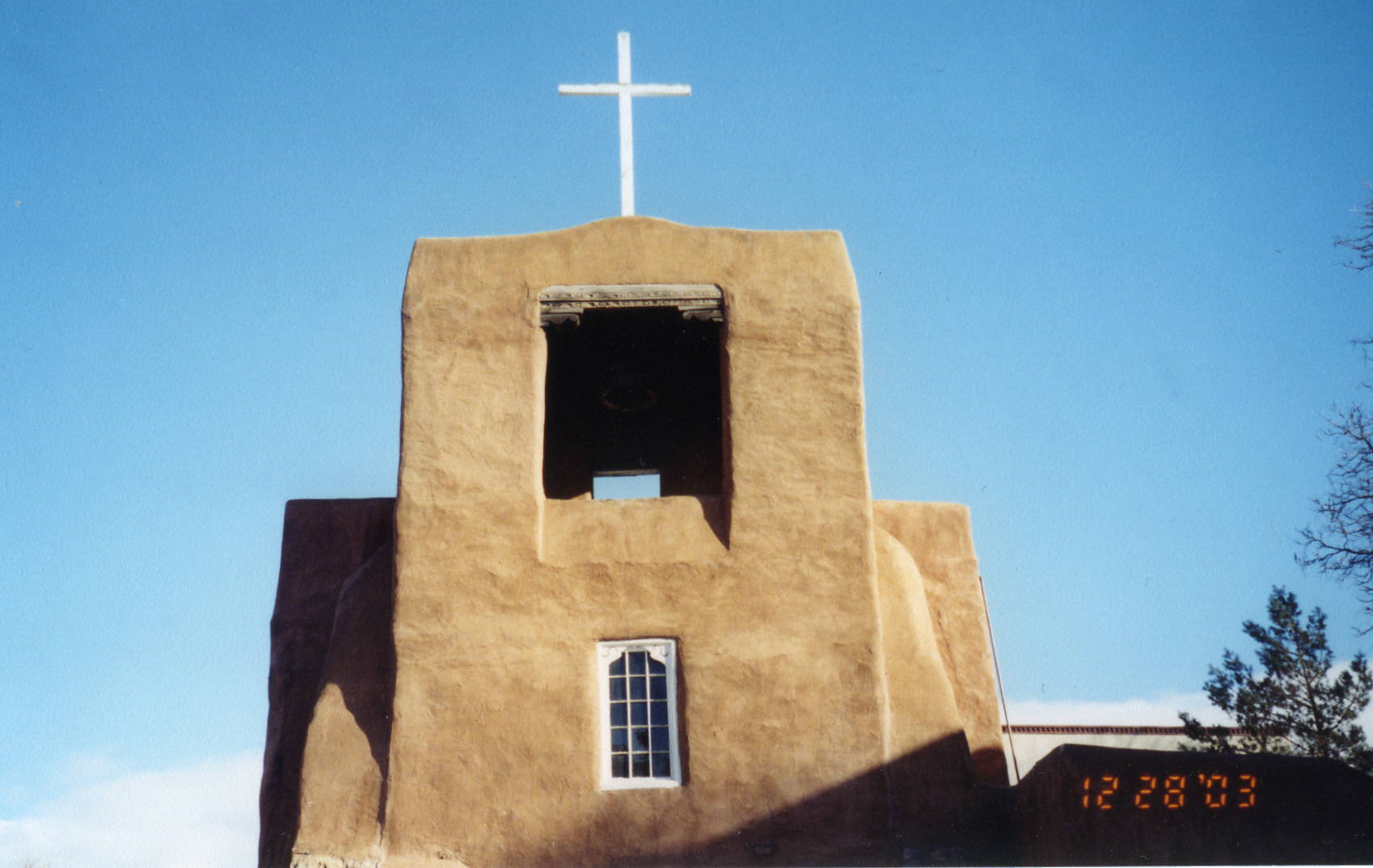February 26-March 3, 2004 issue.

Situated on the foothills of the Sangre de Cristo (Blood of Christ) mountains, Santa Fe sits high and dry at 7,000 feet. The stark desert landscape deceived my eyes; it gave me the illusion that the ocean was just beyond the horizon. Punctuating the flat terrain are mountains ascending to 12,000 ft.
This landscape has been the inspiration for many artists who have made Santa Fe their home. Among these was Georgia O'Keeffe who settled in Abiquiu, a few miles north of the city. The O'Keeffe Museum has a fine collection of the artist's New Mexican landscapes and startling floral paintings. Much controversy has revolved around O'Keeffe's larger-than-life flowers. But once you have examined these canvases, you will never view flowers in the same light again.
Downtown Santa Fe is a place like no other I've visited. Low rise adobe structures in varying shades of brown conform to a city ordinance which preserves the architectural integrity of the city. This is a step in the right direction so future generations can enjoy their cultural and historical heritage.
If you can't visit Santa Fe during the Opera season in the summer, then the winter holidays present a viable alternative to savor the many Christmas revels and indulge in your favorite winter sport. The city radiates with a warm glow when traditional "farolitos" (little candles in brown paper bags filled with sand) are lit up in the evenings.
These lanterns line the entry to the French-Romanesque Cathedral of St. Francis. Red poinsettias, a towering Christmas tree and a creche herald the joyful celebration of the birth of Jesus. The "reredos" (altar screen) while recently carved, is a throwback to the days of the early Spanish setllers. A side chapel is the only remaining part of the original church on this site. The altar is an antique reredo with the oldest Madonna in the United States. Fray Alonso Benavides brought it here in 1626. After the Spaniards won Santa Fe back from the natives in 1693, the statue was renamed La Conquistadora (Our Lady of the Conquest).
That Santa Fe is an important art center is supported not only by thriving art galleries that generate the third largest revenues for the city (government and tourism are the first and second, respectively) but also by the substantial collection of artworks on display at the State Capitol and in various museums in town. On Museum Hill, there are museums dedicated to Spanish colonial art (including "santos" from the Philippines), indian history and culture and international folk art.
A walk along Canyon Road is like walking in an outdoor museum. You'll be bowled over the by the whimsical and colorful sculptures and courtyards that beckon you to enter. Art galleries tout paintings from classical to modern and Southwestern themes. R.C. Gorman's paintings of Native American women are beautiful with simple lines on an autere canvas.
Native Americans have left an indelible mark in the cultural tapestry of Santa Fe. Their vibrant hand woven rugs and blankets, intricately decorated pottery and jewelry are sold throughout town. Alas, the prices are sky high. At the Palace of the Governors, natives sell jewelry as they have for decades. Turquoise and silver are valuble to them because these represent the sky and running water (respectively), important elements in daily life.
While Hispanic and native American influences abound, Santa Fe has yet another foreign legacy. Archbishop Jean-Baptiste Lamy, a Frenchman and the subject of the novel, "Death Comes to the Archbishop", by Willa Cather, initiated the expansion of St. Francis cathedral. He brought European artisans to Santa Fe to build and decorate this and other churches. One of these is the Loretto Chapel which is built in the Gothic style and patterned after the Sainte Chapelle in Paris. But people come to the chapel to see the mysterious, spiral staircase with no visible support. Legend has it that the Sisters of Loretto were desperate, after a failed attempt, to build a staircase to the choir loft. They prayed to St. Joseph, the patron saint of carpenters, for help. A carpenter showed up one day and built an extraordinary wooden staircase that makes two complete 360-degree turns. But just as mysteriously as the carpenter appeared, he disappeared after the staircase was completed, never collecting his fee.
This tale is one of many interesting threads that make up the rich fabric of this, the oldest capital city in the United States. The closer you look at Santa Fe, the more you appreciate the handiwork created by various cultures. Santa Feans have a special name for their town. They call it "The City Different". And it certainly is!

